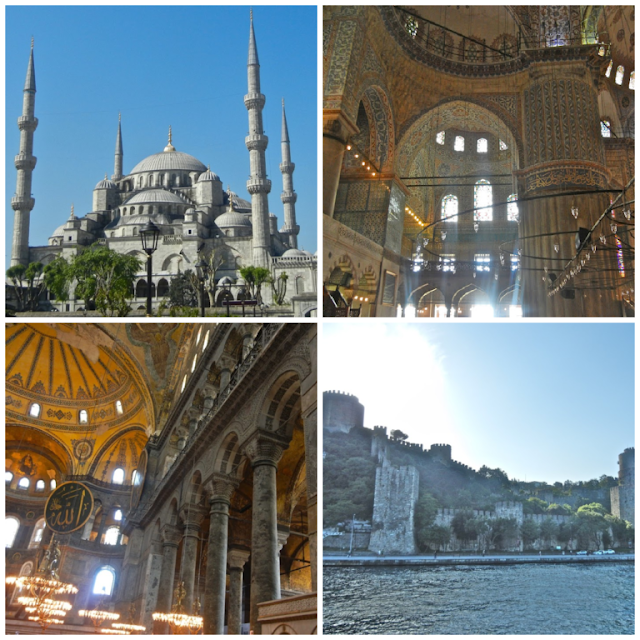Discovering Ancient Turkey
Turkey was one of the most surprising places I’ve ever visited- surprising in a good way!
It’s not a place I ever learned much about or thought much about, which is a shame. Because it didn’t take long after landing in Istanbul to become completely fascinated by stories of the sultans, conquerors, and empires that make up Turkey’s centuries of history.
I haven’t been back since visiting several years ago, but with so much left to discover, it’s near the top of my travel bucket list. While Istanbul is brimming with amazing things to see (the Hagia Sophia, the Blue Mosque, the Grand Bazaar, and Topkapi Palace… to name a few), there are destinations worth discovering throughout the country.
Turkey’s western coast is home to many well-preserved Greek and Roman ruins (yes, the Greeks and Romans really got around!). Here’s a small glimpse into the remains of some of Turkey’s ancient temples, theaters, cities and more- all set among stunning natural backdrops
Ruins of the ancient city of Assos lie on the northwest coast of Turkey on a hill overlooking the Aegean Sea and the modern village of Behramkale. On a clear day (unfortunately not when I visited), you can see the very nearby Greek island of Lesbos in the distance.
Fun fact: the famous philosopher Aristotle lived in this city at one time. He fled the city when Persians attacked it and went on to be Alexander the Great’s tutor in Macedonia.
An even more fun fact: I saw an actual Turkish turkey (or two) wandering around near the ruins.
There aren’t a ton of ruins still standing, but because I had no expectations of what Turkey would look like I found the surrounding views and countryside pretty interesting on their own!
About 65 miles southwest of Assos, take a gondola ride up a steep hill to reach the ancient site of Pergamum Acropolis (the modern city is called Bergama).
Greek mythology says that Telephus, the son of Hercules, was the founder of the city! History says that the earliest ruins found here date back to the 8th century BC.
The highlight of Pergamum is its 10,000 seat theater built into the slope of the hill. It’s the steepest theater ever discovered from the ancient world and has extremely impressive views of the valley below.
Ephesus (called Selçuk nowadays), is probably the most well-known and therefore most crowded of Turkey’s archaeological sites.
Its popularity might have something to do with how well-preserved it is. Walking down the colonnaded streets, you can get a feel for what it must have been like to visit this city in its prime. That would have been in the 2nd century BC, when Ephesus was one of the largest cities in the Roman Empire!
The highlight of Ephesus for me was the lovely facade of the Library of Celsus.
Ephesus used to be home to one of the seven wonders of the ancient world- the Temple of Artemis. It was dismantled to construct the 4th century AD Basilica of St. John. This lone column is all that remains of the pagan temple.
For Christians, Ephesus’ claim to fame was being the one-time home of the apostles Paul and John (though not at the same time).
In Sardis (near the modern city of Sart), most of the remaining ruins are from the Roman and Byzantine periods. The largest building still standing was a Roman bath and gymnasium complex.
Interestingly, part of the gymnasium was converted at one point into a synagogue. This is the largest ancient synagogue ever discovered outside of modern-day Israel, which means that there must have been an important Jewish community in Sardis. Some of the floor mosaics and marble wall inlays can still be seen.
Nearby, a collection of massive columns are all that remains of an ancient pagan temple. I was so impressed by their scale and can’t imagine how things like this were built so long ago.
It took a fair amount of driving, but I managed to see all of this in less than a week. If ancient history is your thing, definitely put Turkey on your list!




























Comments
Post a Comment